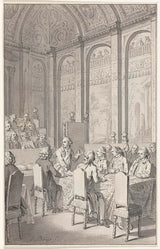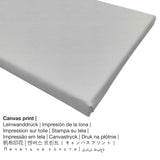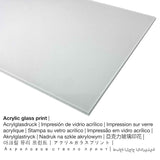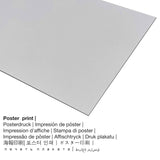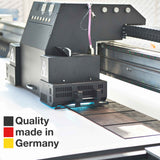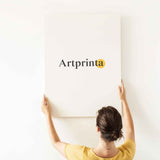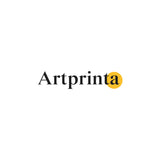Jacobus Buys, 1780 - William V gosipụtara akwụkwọ nke Laurens, 1780 - mbipụta nka mara mma.
Ụtụ gụnyere. Mbupu gbakọrọ na ndenye ọpụpụ.
Nkọwa ihe osise sitere na webụsaịtị ihe ngosi nka (© nwebiisinka - Rijksmuseum - Rijksmuseum)
Gọvanọ William V na-enye ihe na Steeti Holland Nzukọ nke akwụkwọ Bekee nke American Henry Laurens jidere na 20 Ọktoba 1780. Mbipụta Draft.
Ozi ndabere ọrụ nka
| Aha nka nka: | "William V na-akọwa akwụkwọ Laurens, 1780" |
| Nhazi nka: | sere |
| Otu sara mbara: | nka ochie |
| Time: | 18th narị afọ |
| Year: | 1780 |
| Afọ nka: | ihe karịrị afọ 240 |
| Ụlọ ihe ngosi nka: | Rijksmuseum |
| Ebe ngosi nka: | Amsterdam, Netherlands |
| Ebe nrụọrụ weebụ ihe ngosi nka: | Rijksmuseum |
| Licensedị ikike: | ngalaba ọha |
| Site n'aka: | Rijksmuseum |
Tebụl nkọwa omenkà
| Ihe nkiri: | Jacobus zụrụ |
| Aliases: | Buys, Buys Jacob, Jacobus Buys, J. Buys, J. Buis, B[uys], Jacob Buys, Buijs Jacobus, Buys Jacobus |
| Gender: | nwoke |
| Obodo onye nka: | Dutch |
| Ọrụ: | onye na-ese ihe |
| Obodo obibi: | mba netherland |
| Nkewa onye nka: | nna ukwu ochie |
| styles: | Rococo |
| Ndụ: | 77 afọ |
| A mụrụ: | 1724 |
| Amụrụ na (ebe): | Amsterdam, North Holland, Netherlands |
| Afọ ọnwụ: | 1801 |
| Obodo ọnwụ: | Amsterdam, North Holland, Netherlands |
Nkọwa akụkọ ahaziri ahazi
| Bipụta ngwaahịa: | ọrụ mgbidi |
| Usoro mmeghari: | dijitalụ mmeputakwa |
| Usoro mmepụta: | mbipụta dijitalụ (Mbipụta UV ozugbo) |
| Mmalite nke ngwaahịa a: | arụpụtara na Germany |
| Ụdị ngwaahịa: | na mmepụta ihe |
| Ngwaahịa were: | ime ụlọ, ịchọ mma mgbidi |
| Ndepụta: | nhazi ihe osise |
| Ụdị anya: | 2: 3 ogologo: obosara |
| Nsonaazụ: | ogologo bụ 33% mkpụmkpụ karịa obosara |
| Nhọrọ akụrụngwa: | mbipụta ọla (aluminium dibond), mbipụta akwụkwọ mmado (akwụkwọ kwaaji), mbipụta kanvas, mbipụta iko acrylic (nwere ezigbo mkpuchi iko) |
| Nha n'arọwa n'elu ihe ndọtị (mbipụta akwa akwa): | 20x30cm - 8x12", 40x60cm - 16x24", 60x90cm - 24x35", 80x120cm - 31x47", 100x150cm - 39x59" |
| Mbipụta iko acrylic (nwere ezigbo mkpuchi iko) dị iche iche: | 20x30cm - 8x12", 40x60cm - 16x24", 60x90cm - 24x35", 80x120cm - 31x47" |
| Ụdị akwụkwọ mmado (akwụkwọ kwaaji) dị iche iche: | 40x60cm - 16x24", 60x90cm - 24x35", 80x120cm - 31x47" |
| Aluminium dibond ebipụta (ihe aluminium) dị iche iche: | 20x30cm - 8x12", 40x60cm - 16x24", 60x90cm - 24x35", 80x120cm - 31x47" |
| ụba: | agunyeghi |
Nweta nhọrọ akụrụngwa ọkacha mmasị gị
Anyị na-enye ụdị nha na ihe dị iche iche maka ngwaahịa ọ bụla. Anyị na-ahapụ gị ka ịhọrọ n'ime ụdị ndị a:
- Aluminom ihe eji eme ihe: An Aluminium Dibond print is a material with an outstanding depth effect. A direct Direct Print on Aluminum Dibond is the excellent introduction to fine art reproductions with alu. The bright and white components of the original work of art shimmer with a silky gloss but without the glow. This direct print on Aluminum Dibond is the most popular entry-level product and is a sophisticated way to showcase art reproductions, as it puts the viewer’s attention on the image.
- Ebipụta akwụkwọ mmado na ihe akwa akwa: Our poster is a UV printed canvas paper with a slight structure on the surface. It is suited for placing the art print with a custom-made frame. Please note, that depending on the size of the canvas poster print we add a white margin between 2-6cm round about the painting to facilitate the framing with your custom frame.
- Mbipụta kwaaji: A canvas print is a printed canvas stretched on a wood frame. A canvas produces the sculptural impression of three dimensionality. What is more, printed canvas generates a cosy and pleasing look. A printed canvas of this masterpiece will let you turn your art print into a large collection piece as you know from art galleries. The advantage of canvas prints is that they are relatively low in weight. That means, it is easy and straightforward to hang up your Canvas print without the use of additional wall-mounts. Canvas prints are suitable for any kind of wall.
- Mbipụta enyo acrylic: An acrylic glass print, which is sometimes labelled as a an art print on plexiglass, will turn an original into beautiful wall decoration. What is more, it is a viable alternative option to canvas or dibond fine art replicas. With an acrylic glass art print contrasts and also image details become recognizeable because of the fine tonal gradation. The acrylic glass protects your custom fine art print against sunlight and heat for up to 6 decades.
Ozi ndabere ngwaahịa nka
Ihe osise a bụ nke mere rococo onye na-ese ihe Jacobus zụrụ in 1780. Enwere ike ịlele ya na nchịkọta nka dijitalụ nke Rijksmuseum in Amsterdam, Netherlands. Nke a kpochapụwo nka ọha ngalaba artpiece na-nyere site n'ikike nke Rijksmuseum.Ezigbo nka nka bụ: . N'elu nke ahụ, nhazi bụ Eserese na nwere akụkụ ruru nke 2: 3, nke pụtara na ogologo bụ 33% mkpụmkpụ karịa obosara. The painter Jacobus Buys was a European artist, whose style can mainly be classified as Rococo. The Rococo painter lived for a total of 77 afọ a mụrụ ya n'afọ 1724 na Amsterdam, North Holland, Netherlands na nwụrụ na 1801.
Nkwupụta iwu: We try what we can in order to depict our art products as exact as possible and to exhibit them visually on the different product detail pages. Still, the tone of the printing material, as well as the printing might diverge marginally from the representation on your monitor. Depending on the screen settings and the nature of the surface, not all color pigments are printed as realisitcally as the digital version on this website. Considering that all the art prints are printed and processed by hand, there may as well be slight deviations in the motif's size and exact position.
© Copyright - Artprinta (www.artprinta.com)

